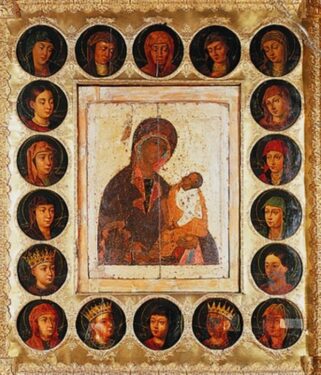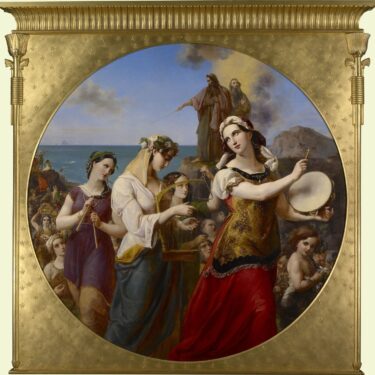
JAMAICA ESTATES — “Are there any women prophets in your book?”
That’s the question that stuck with Kieran Larkin, a religious studies teacher at The Mary Louis Academy, after he published his first book, “Messengers of God: A Survey of Old Testament Prophets,” in 2019.
Having written about male prophets who were chosen by God to deliver messages of encouragement or condemnation — like Elijah, Isaiah, and Jeremiah — Larkin did a deep dive into the few “prophetesses” mentioned in Scripture.
“I’ve always felt grammar and high school-aged students should know a lot more about the Bible because there’s a lot more to it than the Torah and the four Gospels,” said Larkin, who published his second book, “Women Prophets of the Old Testament,” in June 2020. “[The book] is written to acknowledge and celebrate the prophetesses, and give them the honor they deserve.”
There are only a handful of women who are named prophetesses in the Old Testament — including Huldah, married to Shallum who served as King Josiah’s clothier; Miriam, Moses’ sister who led women in song and dance after the crossing of the Red Sea; Deborah, a judge in ancient Israel who ushered in 40 years of peace; Noadiah, leader of a prophetic guild who opposed Nehemiah; and the unnamed “Prophetess” who is often assumed to be Isaiah’s wife. Additional women considered prophetesses by the rabbis who composed and compiled the Talmud include Sarah, Hannah, Abigail, and Esther.
In Larkin’s opinion, one of the most interesting women is Huldah, who only appears by name in two brief passages in 2 Kings and 2 Chronicles.
Huldah was chosen to look at and interpret the meaning of a long-lost scroll, which is often identified as the Book of Deuteronomy. This helped bring about a religious revival, according to Larkin. He also noted that modern-day linguistic analyses conducted by author and researcher Preston Kavanagh suggest that “Huldah’s presence — either by the words she herself composed or through the codings that refer to her both positively and negatively — span all three sections of the Hebrew Scriptures.”

“There’s a very good chance we’re just scratching the surface,” Larkin said. “We might go on to discover other documents that have yet to be unearthed by archaeologists that might indicate more information about the women prophets we already know — or maybe other women prophets we know nothing about.
“In the meantime, however, we can ‘accentuate the positive’ and focus renewed attention on the women prophets we do know.”
Larkin also created his own category during his research and writing process called prophets “on the bubble.”
“There are some other women that the Old Testament and the Talmud are not calling prophetesses, but that you could build a case for calling them that because they seem to meet the criteria,” he explained, naming Rebekah, Rahab, and Samson’s mother as examples.
Now in his 38th year of teaching at the all-girls Catholic high school, Larkin is using his two publications as texts in his senior elective course called “Old Testament Prophets.” About 100 students, who make up more than half of the senior class, are learning more about these male and female prophets.
“I try to help my students see that women have made tremendous contributions and that they have been put down for making those contributions in the past,” Larkin said, “but that we have to move past that and move forward.”
He added, “Maybe some of these women can be viewed as role models who overcame society and made notable contributions in Old Testament-times.”
